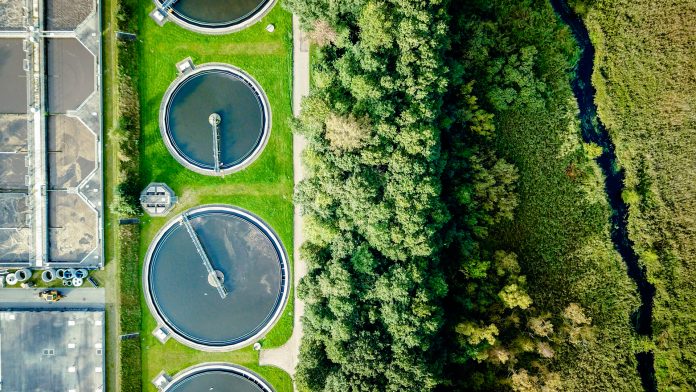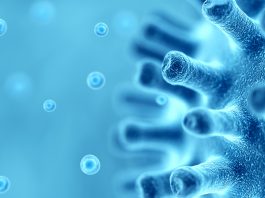Assistant Professor Masaaki Kitajima from Hokkaido University spoke to Innovation News Network about the benefits of wastewater-based epidemiology, and his new COVID-19 mass diagnosis system, which could function as an early warning infrastructure for future outbreaks.
Wastewater systems offer a practical approach to identifying viruses excreted in the faeces of an entire community. Therefore, wastewater-based epidemiology can function as an effective tool for tracing the circulation of viruses in a community, providing the opportunity to estimate their prevalence and geographic distribution.
Wastewater-based epidemiology could provide policy makers with an unbiased method of evaluating the spread of infection in different areas. This innovative detection method could also be useful to determine when a new virus is introduced into a population or when fluctuations occur due to seasonal changes in disease prevalence.
In a recent interview with Innovation News Network, Professor Masaaki Kitajima outlines the features of his new COVID-19 detection system and discusses the inspiration behind his collaboration with pharmaceutical company Shionogi.
Advantages of wastewater-based epidemiology
Wastewater-based epidemiology has a lot of advantages that can exceed those from clinical diagnosis, which has a few limitations. Due to labour and facility requirements, clinical diagnosis can be costly and requires access to equipment in a time of global shortages.
The second disadvantage is that clinical diagnosis can only indicate the prevalence of the virus among symptomatic individuals and governments do not regularly test asymptomatic individuals – despite a significant portion of the infected being asymptomatic. Wastewater can contain viruses excreted not only from symptomatic individuals but also asymptomatic individuals. By monitoring viruses in wastewater, we can understand the actual prevalence of COVID-19 in the population.
Wastewater-based epidemiology also overcomes the issues of stigma surrounding COVID-19. Usual epidemiological tests diagnose individuals. This classical approach cannot avoid the issue of individual stigma, because all the data is associated with personal information. Wastewater-based testing can help us understand epidemiology without personal information
Once we can transfer this technology to society, we can then understand the prevalence of COVID-19 with less cost and without stigma.
We are working with Shionogi, a major pharmaceutical company in Japan, to create wastewater-based technology from a combined viewpoint of academia and industry. Through this collaboration, we want to try to transfer this approach from the university to the market.
Although we aim to operate in the business of wastewater-based epidemiology, our primary objective is not to make money, but to contribute to society by offering this technology to the public.
Partnership with Shionogi
Shionogi became interested in wastewater-based epidemiology two years ago and began working on antibiotic-resistant bacteria in wastewater, and some other pathogenic viruses.
When COVID-19 became prevalent, the company wanted to extend its research to COVID-19 wastewater-based epidemiology. To do this, Shionogi researchers searched the literature to find those who are actively working on this field in Japan, and they found me. They contacted me and I wanted to work with them because the direction of our research was agreeable.
I am very happy about this collaboration because Shionogi is a very big pharmaceutical company, which manufactures drugs, vaccines, and some other pharmaceutical products. It does not manufacture anything related to wastewater, but the company is very interested in this approach because of the way wastewater-based technology can influence COVID-19 responses.
Hokkaido University and Shionogi’s findings
The project will continue until this summer, but it is likely that it will be extended depending on the COVID-19 situation.
We cannot disclose the exact details of what we have discovered, but we have developed a very sensitive technique to detect the virus from wastewater.
The Japanese problem is somewhat different from other developed countries. Fortunately, in Japan the number of COVID-19 patients is relatively low so the concentration of viruses in wastewater is quite low.
Methods that have been successfully applied for the wastewater detection of novel coronavirus in other countries have worked very well because the concentration of the virus is very high and easy to detect. However, these methods are not sensitive enough to be used in countries like Japan that have lower infection rates.
We needed to develop highly sensitive detection methods to find the virus in wastewater where there is a low number of infected individuals and we have succeeded in developing novel methods.
Using our technology, we investigated the presence of novel coronavirus in wastewater from a quarantine Hotel in Japan because we are more likely to detect the virus. We did this to explore the use of this technology on facility level wastewater. It is important that we study facility level wastewater because it helps us examine the prevalence of COVID-19 in areas such as university dormitories, sports organisations, schools, or even the Olympic Games athlete’s village, as we are expecting to have the Tokyo Olympic/Paralympic Games this summer and wastewater-based epidemiology can help us keep the Olympic/Paralympic athletes and staff safe.
To implement wastewater-based epidemiology at the athlete’s village, we first need to provide a proof of concept. To do so, we investigated the wastewater from the quarantine hotel. We successfully detected COVID-19 in the untreated wastewater from the hotel but did not find the virus in the treated wastewater that had passed through the hotel’s decentralised wastewater treatment system, revealing that such systems completely remove novel coronavirus from wastewater.
New automated wastewater testing
We are trying to automate our wastewater-based virus detection system and we hope that this infrastructure can be used to detect viruses on site, for example, we aim to install automatic sampling and a PCR testing device at every wastewater treatment plant in Japan, so, that we can collect virus concentration data every day from plants across the country.
Using this infrastructure, we can alert people if the concentration of the virus increases. To achieve this, we will need to implement the infrastructure with less cost and less labour, ideally, with an automated virus detection device.
The aim is to implement this system in as many wastewater treatment plants and facilities as possible.









